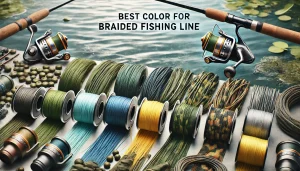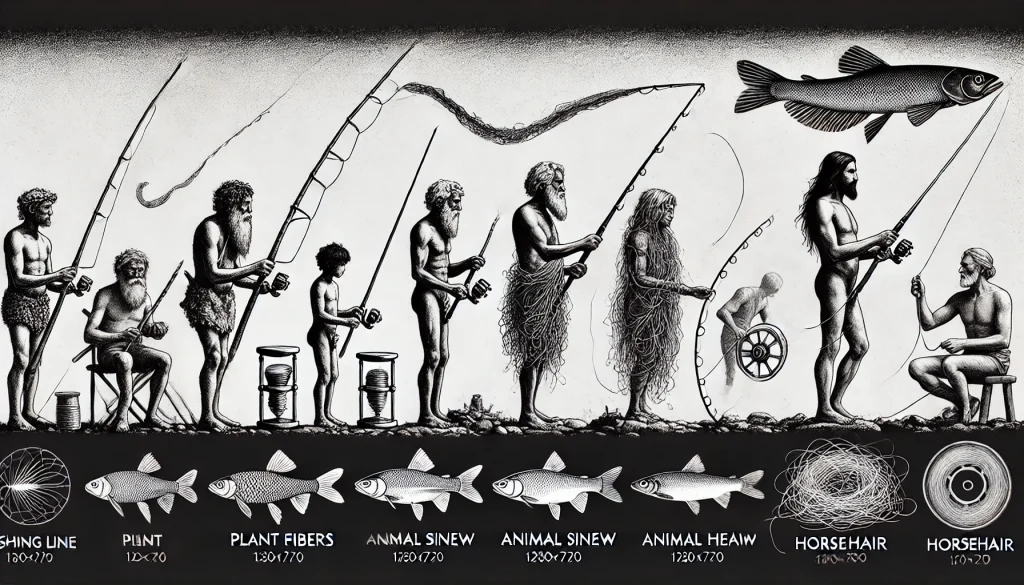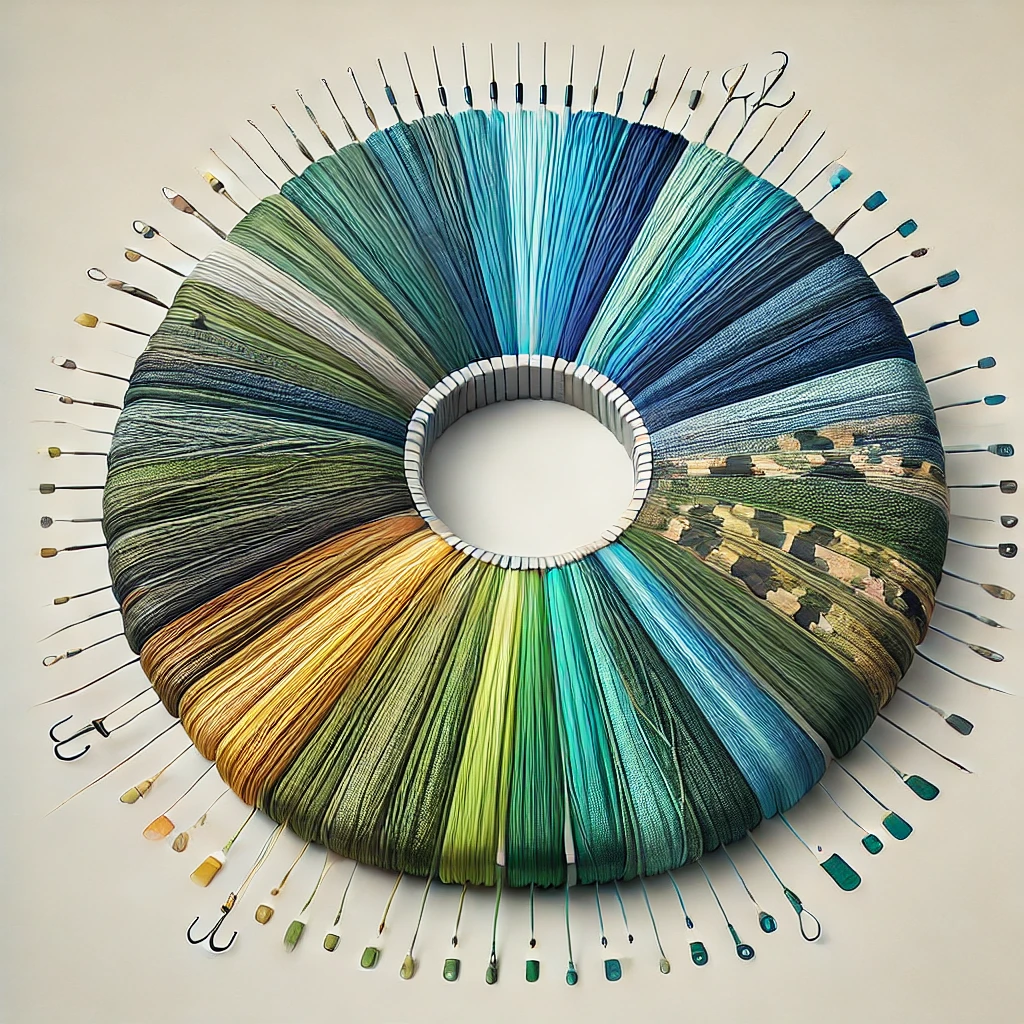Currently Empty: $0.00

When it comes to choosing the best color for braided fishing line, the decision can significantly impact your fishing success. Anglers often debate the merits of different colors, weighing factors like water clarity, depth, and the behavior of their target species. With so many options available, it’s essential to understand the role color plays in your fishing strategy. In this guide, we’ll explore the best colors for braided fishing line, backed by history, expert insights, and practical considerations.
The Evolution of Braided Fishing Line

Braided fishing line has come a long way from its origins. Early fishing lines were made from natural materials like horsehair, cotton, and silk, which were then twisted or braided together to create a stronger line. However, these lines had limited durability and were highly susceptible to water absorption and rotting.
The modern braided fishing line as we know it began to take shape in the mid-20th century with the introduction of synthetic fibers. Materials like Dacron, Spectra, and Dyneema revolutionized the industry, offering lines that were much stronger, thinner, and more resistant to the elements. These materials paved the way for the brightly colored braided lines today.
The Importance of Color
The color of your braided fishing line can affect your fishing success in subtle yet significant ways. While braided line is known for its strength and sensitivity, it is also highly visible in the water. This visibility can be both an advantage and a disadvantage, depending on the circumstances.
water. This visibility can be both an advantage and a disadvantage, depending on the circumstances.
Certain fish are more cautious and may shy away from a visible line, especially in clear water. In such scenarios, choosing the best color for your braided fishing line can help you avoid detection and improve your chances of a successful catch.
Popular Colors for Braided Fishing Line
1. Green Braided Fishing Line
Green is one of the most popular colors for braided fishing lines, particularly in freshwater environments. It blends well with the natural surroundings, such as vegetation and algae, making it less visible to fish. This color is especially effective in lakes, rivers, and ponds where the water is not crystal clear but has some degree of murkiness.
Anglers appreciate green braided fishing line because it strikes a balance between visibility for the angler and invisibility to the fish. However, in extremely clear water, even green lines can become noticeable, which might necessitate using a leader or switching to a different color.
2. Yellow Braided Fishing Line
Yellow braided fishing line is highly visible above water, making it an excellent choice for anglers who need to keep a close eye on their line. This color is particularly beneficial for detecting subtle bites or when trolling. It’s also useful in low-light conditions, such as dawn or dusk, when other colors might be harder to see.
However, the visibility of yellow braided line can be a double-edged sword. In clear water, fish may be able to spot the line easily, which can spook them. To mitigate this, anglers often attach a fluorocarbon leader to the end of the yellow line, providing invisibility in the water while retaining the benefits of high visibility above the surface.
3. Blue Braided Fishing Line
Blue braided fishing line is a favored choice for offshore and deep-sea fishing. The reasoning behind this color choice is straightforward: as you descend deeper into the ocean, blue light penetrates further than other colors, making the line less visible at greater depths.
While blue is a strong performer in saltwater environments, it may not be as effective in freshwater or shallow areas where the blue color contrasts more sharply against the backdrop. Understanding the specific conditions of your fishing environment is key when opting for a blue braided fishing line.
4. Red Braided Fishing Line
Red braided fishing line is often chosen for its perceived invisibility in the water. There’s a common belief that red becomes less visible as it descends, as red light is filtered out first as depth increases. This theory suggests that at certain depths, red lines might become nearly invisible, giving anglers a stealth advantage.
However, this concept is somewhat controversial. While red light does dissipate quickly underwater, some studies suggest that fish can still detect red hues at various depths. Nonetheless, red braided line remains a popular choice for anglers who believe in its low-visibility properties, particularly in deep or stained waters.
5. White Braided Fishing Line
White braided fishing line is another versatile option, often used in both fresh and saltwater. Its bright color makes it easy for anglers to see, but it can also blend into the sky when viewed from below, making it less conspicuous to fish. This duality makes white a strong contender in various fishing conditions.
However, in clear water, the stark contrast of white can sometimes work against you. Fish might spot the line more easily, which is why many anglers use a leader with white braided line, especially when targeting finicky species. Their are lot of different factors that you should also consider which I will explain below.
Factors to Consider
Water Clarity and Color
Water clarity is one of the most critical factors in selecting the best color for braided fishing line. In clear water, a more subtle color like green or blue might be preferable, while in stained or murky water, brighter colors like yellow or white can be beneficial for visibility.
Depth of Fishing
The depth at which you plan to fish also influences color choice. As mentioned earlier, colors like blue or red may become less visible at greater depths, which can be an advantage when targeting deep-sea species. Understanding how light penetrates water at different depths will help you make an informed decision.
Target Species
The ocean is full of wonders, as they say! Different fish species have varying levels of visual acuity and sensitivity to color. Researching your target species can give you insights into which colors they are more or less likely to notice, allowing you to tailor your line color to your specific fishing goals.
Personal Preference and Visibility
Ultimately, the best color for braided fishing line also comes down to personal preference. Some anglers prioritize their ability to see the line above water, while others focus on the line’s invisibility to fish. Consider what aspects of line performance are most important to you and choose accordingly.
Conclusion
Selecting the best color for braided fishing line is not a one-size-fits-all decision. It requires careful consideration of your fishing environment, the species you’re targeting, and your personal preferences. Whether you opt for green, yellow, blue, red, or white, understanding the strengths and limitations of each color will help you make an informed choice.


